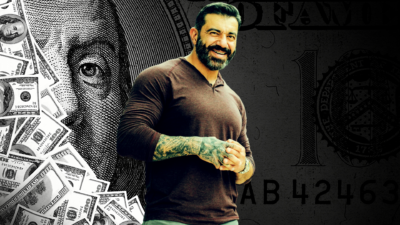
“I’m bored.”
The words every parent recognizes — and likely dreads.
Our children are continually learning, socialising, and most have a busier calendar of birthday parties and playdates than we do. But, during the summer or less busy times, children often quickly find themselves looking for things to do.
From teens to tweens to little ones boredom is no stranger! We even get bored! Children aged between five and six years old are used to a structured routine. However, occasionally your routine may change or be less busy on some days or during holidays.
This leaves your kids not knowing what to do with themselves. Without an endless stream of activities to keep kids occupied outside of the house, here’s how to help them grow accustomed to days where there’s often a dull moment, so everyone stays sane.
Why your child gets bored
Boredom is a familiar feeling in children. Feeling irritated, unsatisfied, or uninterested by any activity can lead to boredom. Boredom occurs when your kid feels energetic but has no idea where to direct his energy. Boredom is a common complaint among children and adults, as well.
You or your child may become bored while engaged in an activity, due to:
- Loss of interest
- Confusing instructions
- Fear of making a mistake
- Repetition of the activity for too much time
- Feeling unable to try new approaches to the activity
How you can use Conscious Parenting Guidance if your child is bored
Although you may too be feeling fraught at times with life so uncertain and a lack of any routine, it’s an opportunity to apply conscious parenting guidance, and not respond to them angrily or rudely.
Try these steps:
- Don’t ask why your child is bored. That can be a roadblock in communication.
- If your kids are frustrated, don’t respond in an angry or annoyed way. Take a deep breath and center yourself first.
- Help your child recognize other emotional issues or feelings which you might have mistaken as boredom.
- Ask open-ended questions to get their creative juices going.
- Help your child find an engaging activity or one you can participate in together.
- Your child may just be feeling bored temporarily. They may be trying to get your attention, or they may just want to play.

7 ways you can keep boredom at bay with your kids
That’s all very well, but what if your imagination of engaging activities is exhausted or you are busy and exhausted and do not have time to always entertain them?
Here are ideas for helping to stop the boredom at home.
Get Back To Nature
It’s the perfect opportunity to let their creativity thrive and spend some time nurturing plants and seeds which could grow in the garden or a window box.
Remember your childhood favorites
What about all the simple things you could entertain yourself doing for hours when you were a child. Maybe a good old fashioned paper airplane race?
How about finding a rope and skipping? Learning to hula-hoop? Remember all those rainy days you filled by playing hang-man?
Go High Tech
You don’t need to avoid all of the technology available. But as a conscious parent, you may want to guide your children towards some of the more socially conscious apps or encourage them to use their time on-line to build their blog.
Fix Things
How many items do you have on your fix-it list? Usually, we are time-poor, and it’s easier to throw something away and get another one when it breaks. This is the perfect opportunity to teach your child how to fix things. Maybe you can show your older children how to sew a button back into a shirt, or even learn together. There is an abundance of YouTube tutorials that will guide you through.
Music
Why not encourage your children to develop their music tastes? It’s the perfect time to explore their likes and tell them about a song of your favorite bands and songs.
Cook
What better way to get creative together than to cook together? You can concoct something from the cupboard, or follow a recipe along. It’s an opportunity to explore flavors and tastes and be present in making something creative for the family to enjoy. And, of course, if you’re baking, someone needs to lick the frosting from the spoon. It’s a rite of passage.
Put on a play
Or even a dance number. Learn it, perform it, and enjoy them getting into character and being someone else for a while. It’s an opportunity to learn empathy as they can see a situation from another’s eyes.

Why a little boredom can help your kids
These are all great ideas, but is a little boredom healthy for your child? Dr. Steve Silvestro says it’s essential to allow your child to be bored and that it can spark creativity — and that’s why some of us get our best ideas in the shower.
Doing the same routine every day, often at the same time of day, over and over again — it’s pretty dull in there. That dullness and monotony actually gives your brain freedom to wander and explore nooks and crannies of thought that you might not meander through at other parts of your day.
When children are bored, they have the luxury to allow their minds to explore in more detail. It gives the opportunity to get ingenious and creative.
Encourage your children to come up with some ideas themselves. You can build a “Thinking Spot” for your child. If you can create a space in your child’s room or a playroom with a comfy seat or pillow, paper & pencils, perhaps even small toys for inspiration, then when your child says that they are bored, suggest that she sit in the “Thinking Spot” and come up with ideas.
Boredom is completely normal. Dr. Dibya Choudhuri, a professor with the counselling program at Eastern Michigan University in Ypsilanti says we didn’t have a word for boredom until the 19th century.
It isn’t necessarily a bad thing. But very quickly it got a very bad rap. When children are left alone to figure something out, you’ll often be blown away by their ability to problem solve, and boredom gives this a chance to develop.

This is why it’s actually healthy to let your kids get bored for a certain amount of time.
Of course — none of this will stop the bleating cry of “I’m bored,” so it’s helpful to be prepared with your responses. Ignoring them doesn’t get you much peace. The best approach is to turn it into a positive. When you hear those fateful words, you can tell them, “I love it when I’m bored. I can get really creative with what I’m going to do next. I have time to think, and it’s up to me to do whatever I want to do.”
If you liked reading this blog post, then check out our blog post all about how to get some structure during chaos.














